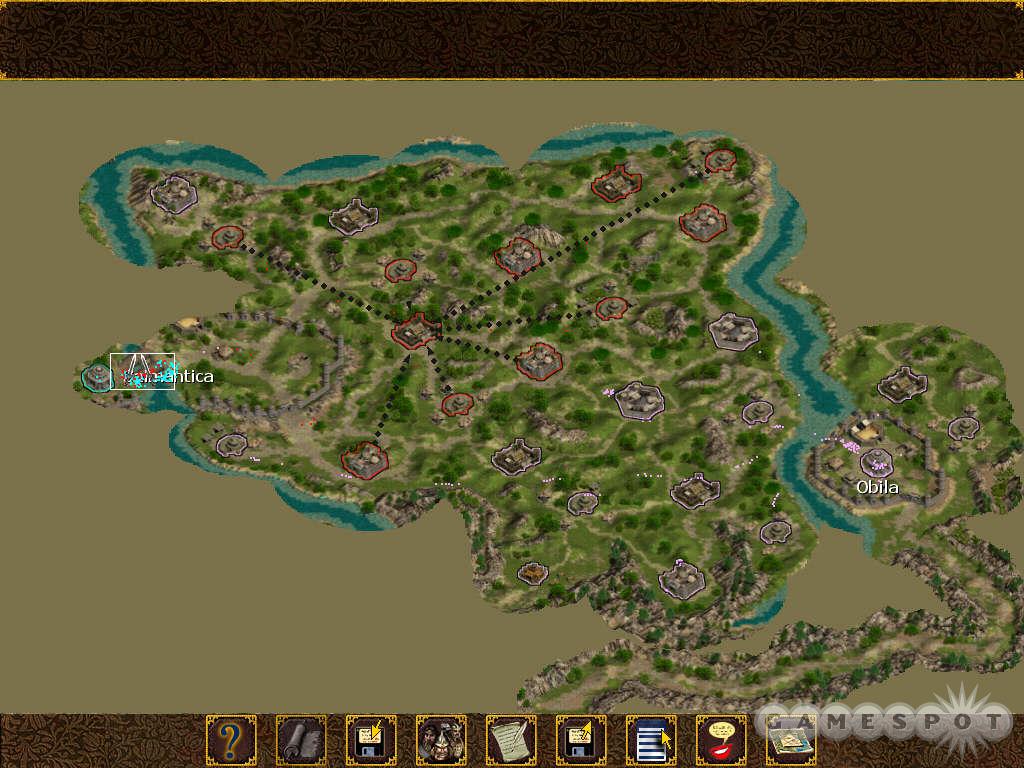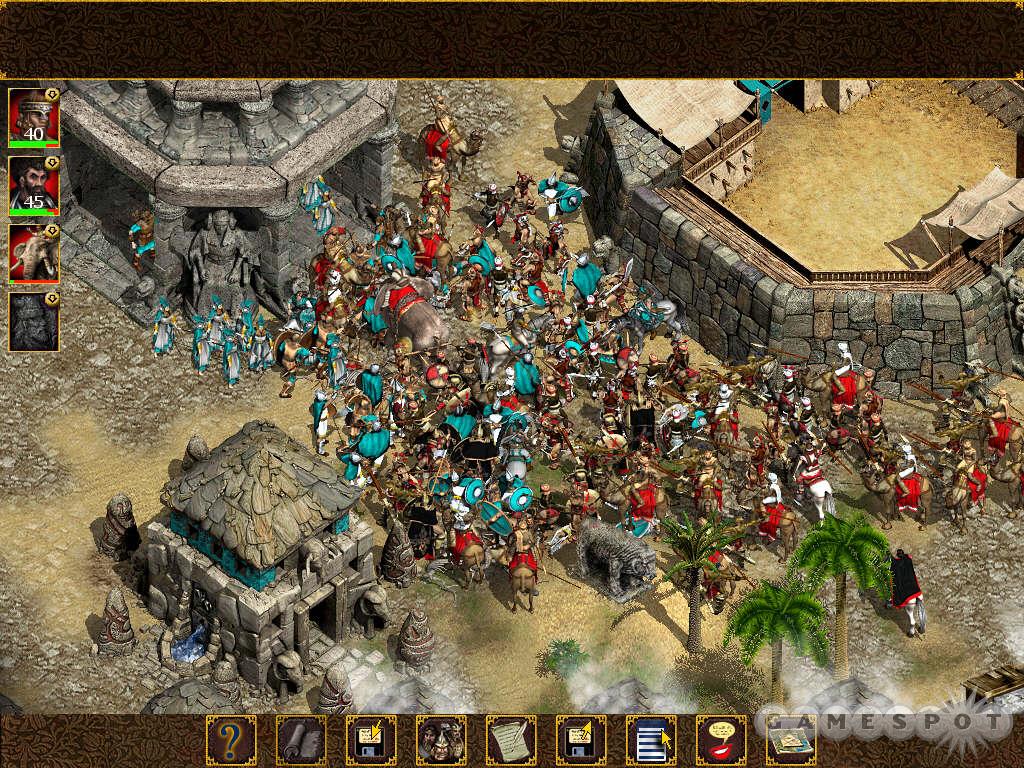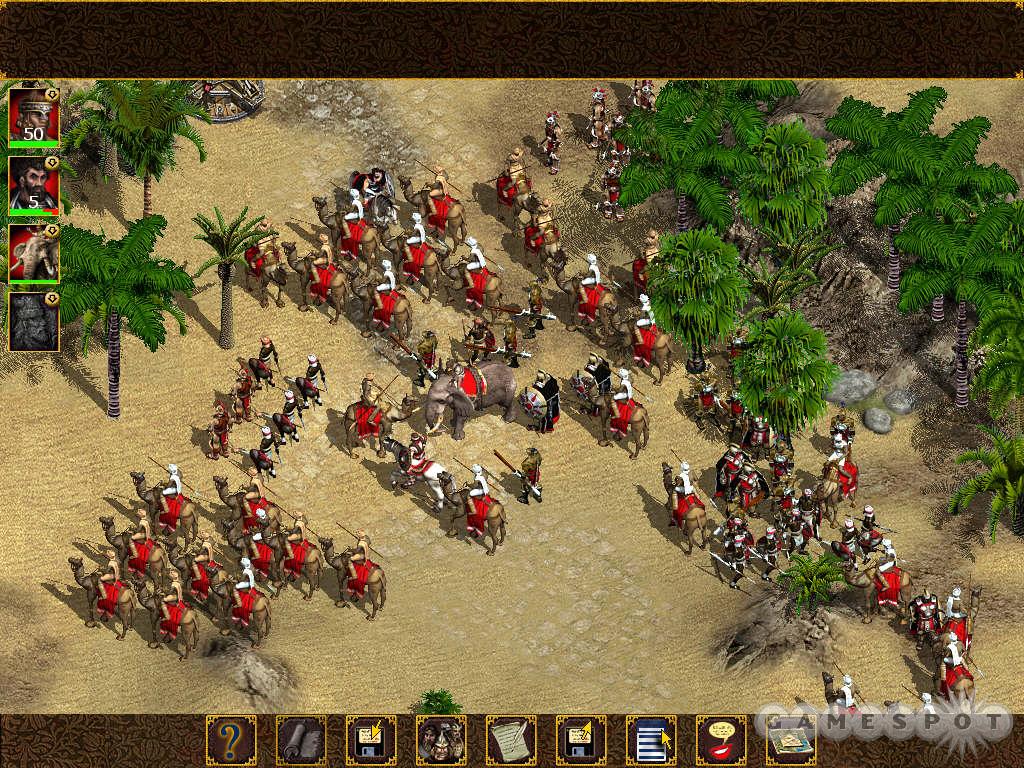Nemesis of the Roman Empire (also known as Celtic Kings: Punic Wars outside the US) is Haemimont Games' follow-up to its well-received real-time strategy game Celtic Kings: Rage of War. Nemesis is built upon the same engine as its predecessor but adds two new races, the Carthaginians and the Iberians, to the Gauls and Romans that were available in the original Celtic Kings. While on the surface Nemesis offers features we've seen many times before in the genre, such as hero characters and a lack of base-building, it also includes a clever logistics model and better-than-average artificial intelligence to help it stand apart from the numerous RTS clones on the market.

On the whole, Nemesis' presentation is easily the game's worst aspect--relatively speaking. The orchestral-style music sets an appropriate mood for a game based on classical wars between Rome and Carthage, but the few available scores grow repetitive rather quickly. Voice acting in the game is also rather bad, just as it was in its predecessor. Simplistic cutscenes are interspersed between the campaign missions, but for the most part, the characters in the game interact via text boxes, and mission objectives are given to you with more unceremonious text.
Graphically, the game is pretty good but not great, as the engine seems to have aged since the original Celtic Kings. There's a decent sense of scale between the units and buildings, as well as a fair amount of detail in the actual unit models. The animation is where things start to fall apart--while most units look fine while standing in place and battling, they have somewhat awkward walking motions.
Despite the superficial shortcomings, the engine is still pretty impressive in the bigger picture. Nemesis maps can be rather large, with dozens of units rendered on the same screen, and you can instantly jump from one part of the battle to another, via the extremely detailed and useful map screen. The game seems to be able to effortlessly render the activity of hundreds of units, possibly engaged in many different skirmishes at the same time, across an entire map. With a simple press of the space bar, you can examine a full-screen view of the level, including color-coded dots representing your troops and the enemy's troops, the villages and forts you control, and where those facilities are shipping their resources. Fog of war is a part of the game, but in many cases, you can still discern enemy troop movements and army sizes with a quick glance at the map screen.
Like in many other RTS games, there's no base-building to worry about, but you must keep track of standard resources like food and gold. You use food to increase the population of your cities, and it can also be sold for gold, while gold is used to train troops and buy upgrades. It's the logistical element that helps Nemesis stand out from the competition. Your troops out in the field consume food, so to maintain a standing army outside the city, you must make sure to have pack mules laden with food follow your army around and keep it fed. Even if you have your army garrisoned in a fort, you must maintain a steady supply of food to that fort to maintain combat efficiency.

The logistical aspects carry over to resource gathering. To obtain food, you must capture and retain control of outlying villages. These villages create food at a fixed rate, which must then be transported to forts--which can accumulate food--or to your city. Creating a supply link from one village or fort to another property takes just two clicks, minimizing hassle, but the capture and recapture of valuable villages and forts forms the basis of all conflict in Nemesis. The supply lines you create are also vulnerable to attack by your enemies, as mules can either be killed or captured. This means that the properties you gain make you stronger, but you also have the added responsibility of defending a much wider area.
The combat in Nemesis should feel familiar to fans of recent RTS games. Units can be attached to heroes, allowing them to move in formation and also gain bonuses for being under the command of a hero. Each race also has an array of units that are similar in look and feel but offer enough differences in attributes that each side plays a bit differently. For example, the Carthaginians have camel riders, instead of horses, that have a better attack than most other cavalry but are also more expensive. The magic users of each race also help differentiate the nations. The enchantress of the Iberians, for instance, has the very useful ability to train freshly recruited troops to higher levels without having them go into combat. Special structures, like ruins for your magic users to cast world-altering spells and cave systems that offer the ability to instantly move from one side of the map to the other, are also available in many levels to vary the gameplay.
The enemy AI is fairly clever, and it doesn't seem to cheat as in many other RTS games. You'll see groups of enemy forces scouting around the map, probing your forward properties for a weak point. If you leave a fort or village lightly defended, the AI will intelligently attack those instead of wasting troops on your more heavily defended properties. While sieging enemy cities, you'll see the computer attempt feints and harassing charges to try to draw your troops away from your catapults and bring your army into range of its own towers. At the same time, the computer is usually smart enough to not be duped by your own attempts to bring his attacking forces within range of your towers when the tables are turned. Our primary complaint is that getting all of your units in a large army to engage nearby enemies can be problematic. At times, you'll see half your army fighting, while the rest sit idly just a few feet away watching their comrades tussle.

Nemesis includes two good-sized campaigns: One follows Hannibal's march through Hispania and the outlying Roman territories, and the other depicts the Roman side of the war. There are three additional siege-style maps available as well. Once you're done with the campaigns, a robust skirmish mode is available to you for single-player games against up to seven computer opponents or for multiplayer action. The game will generate a random map for you, much like the Age of Empires games, and you can select from a number of settings, such as map style, disabling certain property types (like the ruins or caves), or allowing starting bonuses to certain players as a handicap. A server browser is provided for online play, but as with many lower-profile RTS games, finding an online Nemesis match may prove difficult since it has no true dedicated matchmaking service.
Overall, Nemesis of the Roman Empire is a fine follow-up to Celtic Kings, and a great real-time strategy game on its own merits. The new campaigns offer varied and interesting gameplay just like the original game, and the added races offer a new dimension for existing fans. The winning gameplay formula has been tweaked only slightly, with Haemimont not attempting to "fix" what clearly wasn't broken.